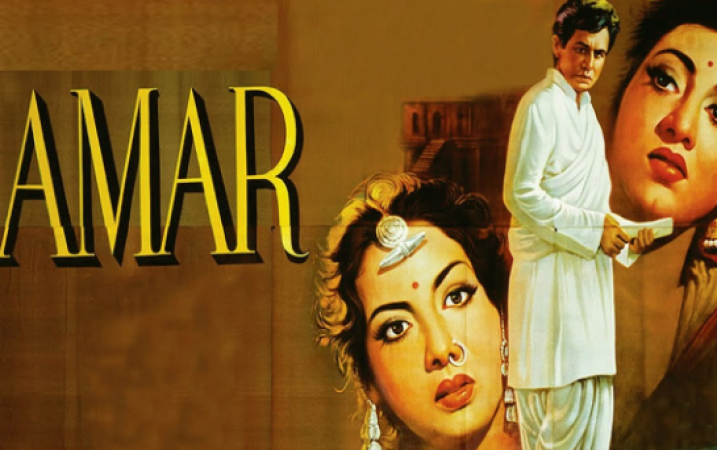
In the world of filmmaking, choices about color and tone are crucial in determining the impact and mood of the story. Such choices frequently result from a director's artistic vision and comprehension of how various factors can come together to produce an impactful cinematic experience. Despite the availability of color technology, the 1954 classic "Amar" stands out for its deliberate decision to be shot in black and white. This intriguing choice, which had its origins in the director's artistic goals, gave the story in the movie a fresh perspective. This article delves into the cinematic world of "Amar," examining the reasons behind its decision to use monochromatic imagery and how it complemented the overall mood of the movie.
The film "Amar," which was directed by Mehboob Khan, is a story of love and sacrifice against a backdrop of societal expectations and individual goals. The decision to shoot "Amar" in black and white could have been seen as a constraint in an era when color technology was available. Khan's vision, however, went beyond the allure of color and concentrated on how the lack of it could improve the storytelling experience.
To establish a specific mood and tone, "Amar" was primarily shot in black and white. The movie discusses the difficulties the characters face as well as complicated emotions and societal expectations. The director could emphasize the contrasts between light and shadow thanks to the monochromatic palette, which increased the dramatic impact of the picture and added to the emotional complexity of the story.
Mehboob Khan was able to use visual metaphors that might not have had the same impact in a color film because of the absence of color. In the monochromatic world, the interplay of textures, stark contrasts, and the play of light and shadow gave the narrative additional layers of symbolism. This creative decision made it possible to communicate themes, emotions, and character dynamics in a more subtle and nuanced way.
The black and white aesthetic of "Amar" placed the emphasis on the actors' performances. With color removed, the actors' expressions, body language, and subtle nuances of their delivery captured the audience's interest. This improvement in performances was essential in expressing the complexity of the characters' journeys and their range of emotions.
Additionally, the monochromatic approach contributed to "Amar's" timeless appearance. The movie was able to outlive its time of release and stay current and interesting for future generations by eschewing the trend of color films that was developing at the time. The absence of color made the focus on emotions and storytelling more accessible, and this aspect gave the movie's visual appeal an enduring quality.
The absence of color's potential for distraction lends black and white films a sense of realism. This realism was employed in "Amar" to enhance the characters' sense of immediacy and relatability in their social and emotional struggles. Audiences were better able to relate to the experiences of the characters because of the absence of color, which added a sense of authenticity to the movie.
The 1954 film "Amar" is a testament to the artistry and creativity of Mehboob Khan. Khan created a cinematic experience that went beyond the accepted norms of its time by purposefully deciding to shoot in black and white rather than color. The monochromatic backdrop gave the movie's narrative a deeper, more symbolic, and more universal quality. "Amar" was successful in creating an engaging and lasting narrative by emphasizing feelings, performances, and thematic nuance. Black and white was purposefully chosen because it not only complemented the movie's mood overall but also enhanced its artistic and cinematic value, leaving a lasting impression on viewers and contributing to the development of Indian cinema.
The Alpine Elegance of Yash Chopra's 1970s Cinematic Romance